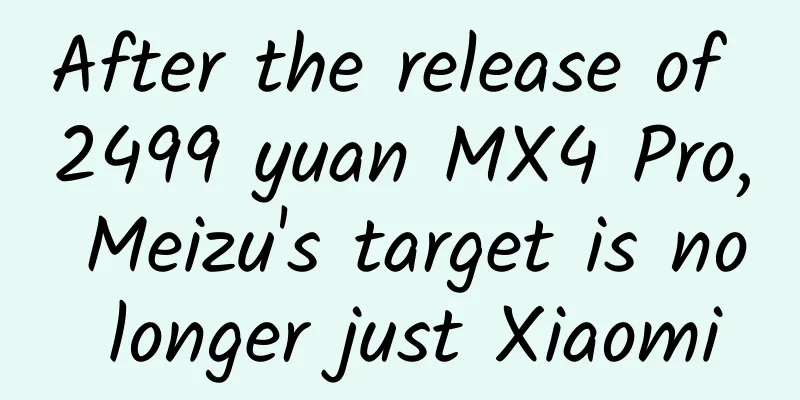6 Lessons for Rapidly Scaling Applications

|
While the COVID-19 pandemic is still having an adverse impact on community life and the economy, on the other hand, many companies have seen a significant surge in demand for their products and services in areas such as e-commerce, logistics, online learning, food delivery, online business collaboration, etc. For many of these companies, shelter-in-place and lockdown orders have caused user demand and changes in transaction and payment methods, resulting in a surge in business for some companies. These surges have caused a rapid surge in application usage, which may cause business delays and interruptions, which will frustrate users. What would you do if your organization's business and application load increased dramatically? How can you quickly improve application performance and scalability to ensure a great customer experience? Here are six lessons for quickly scaling applications the right way.
View all challenges Solving only some of the problems may not achieve the desired results, so be sure to consider all of the following factors. Technical Issue: Application performance under load (and ultimately the user experience) is determined by the interplay between latency and concurrency. Latency is the time required for a specific operation, such as the time it takes for a website to respond to a user request. Concurrency refers to the number of requests that a system can handle simultaneously. When concurrency is not scalable, a significant increase in demand can result in an increase in latency because the system cannot respond to all requests immediately when they are received. This can result in a poor customer experience as response times increase from fractions of a second to several seconds, or even longer, to the point where all requests may not be responded to. Therefore, while ensuring low latency for a single request may be important, it may not by itself address the challenges posed by a surge in concurrency. Therefore, a way must be found to scale the number of concurrent users while maintaining the required response time. In addition, the application must be able to scale seamlessly across a hybrid environment of multiple cloud providers and on-premises servers. Timing: A strategy that takes years to implement, such as redesigning an application from scratch, will do little to address the immediate need. The solution adopted should be able to start scaling within weeks or months. Cost: Few companies take on this challenge without budget constraints, so a strategy to minimize upfront investment and increase operational costs is critical. Plan for the short and long term Even if the challenge of increasing concurrency while reducing latency is solved, don’t rush into potentially costly short-term fixes. If a complete redesign of the application is not planned, a strategy can be adopted that enables the existing infrastructure to scale massively as demand demands. Choosing the right technology Open source in-memory computing solutions have proven to be the most cost-effective way to quickly scale system concurrency while maintaining or reducing latency. For example, Apache Ignite is a distributed in-memory computing solution deployed on a cluster of commodity servers. It pools the available CPU and RAM of the cluster and distributes data and computation to individual nodes. Ignite is deployed locally, in a public cloud, a private cloud, or in a hybrid environment, and can be plugged into an in-memory data grid between existing applications and data tiers without major modifications to either of them. Ignite also supports ANSI-99 SQL and ACID transactions. With the Apache Ignite In-Memory Data Grid in place, relevant data in the database is "cached" in the RAM of the compute cluster and is available for processing without the latency incurred by normal reads and writes to disk-based data stores. Ignite IMDG uses a MapReduce approach and runs application code on cluster nodes to perform massively parallel processing across the cluster while minimizing data movement over the network. This combination of in-memory data caching, sending computations to cluster nodes, and MPP significantly increases concurrency and reduces latency, resulting in up to 1,000 times faster application performance than applications built with disk-based databases. Ignite's distributed architecture allows you to increase the computing power and RAM of a cluster simply by adding new nodes. IGNITE automatically detects additional nodes and redistributes data across all nodes in the cluster, ensuring optimal use of the CPU and RAM combination. The ability to easily add nodes to a cluster also enables massive scalability to support rapid business growth. Finally, IMDG ensures data consistency by writing changes made by the application layer to data in the IMDG back to the source data store. Apache Ignite can also future-proof your infrastructure by supporting two increasingly important strategies. Digital Integration Hub (DIH): The DIH architecture can support real-time business processes that require a 360-degree view of data. It provides a common data access layer for aggregating and processing data from data streams and internal and cloud-based sources, including internal and cloud databases, data lakes, data warehouses, and SaaS applications. Multiple customer-facing business applications can then access the aggregated data and process it at in-memory speeds without moving the data over the network. The DIH automatically synchronizes changes made to the data by consuming applications to the backend data stores, while reducing or eliminating the need for API calls to these data sources. Hybrid Transactional/Analytical Processing (HTAP): HTAP is the high-speed processing of the same in-memory data set for both transactions and analytics. This eliminates the need for time-consuming extract, transform, and load (ETL) processes to periodically copy data from an online transaction processing (OLTP) system to a separate online analytical processing (OLAP) system. HTAP is powered by an in-memory computing platform that runs predefined analytical queries on operational data without affecting overall system performance. Consider the open source stack To continue creating cost-effective, rapidly scalable infrastructure, consider these other proven open source solutions:
Build, deploy and maintain correctly Since there is a desire to deploy these solutions in a faster time frame, and at the same time the consequences of delays can be very high, a realistic assessment of the internal resources available to the project must be made. If there is a lack of expertise or availability, do not hesitate to consult third-party experts. Support for all of these open source solutions can be easily obtained under contract, making it possible to obtain the required expertise without having to spend time expanding the internal team. Learn more Many online resources can help you quickly get up to speed on these techniques and determine which strategies might be right for your organization. Whether your goal is to ensure the best possible customer experience amid a surge in business activity or prepare for a post-pandemic economic recovery, an open source infrastructure stack powered by in-memory computing is a cost-effective way to combine unprecedented speed with massive scalability for real-time business processes. |
>>: What frameworks are there for mobile app development?
Recommend
"Building an operational anchor from 0-1" anchor foundation, mentality shaping, ability training to live broadcast rhythm, speech skills
Course Contents: Section 1: Traffic push mechanis...
Toilet paper in many parts of the world has been exposed to contain carcinogens. In fact, many items also contain carcinogens. Is there a need to worry?
Recently, the British newspaper The Guardian repo...
These 5 driving habits really waste fuel! Many experienced drivers don’t know...
Friends who love cars You often hear conversation...
How did Lao Luo, who has feelings, manage this event?
Although netizens always jokingly say that watchi...
Let’s talk about how to increase followers on apps like Tik Tok and Zhihu!
Today let’s talk about the issue of increasing fo...
Fan Jian Taobao Tmall Courses - Business Advisor Data Analysis Courses (Advanced) to help you run your store easily
Fan Jian Taobao Tmall Courses - Business Advisor ...
Do you take anti-inflammatory drugs when you have a cold? Can vitamin C and ginger tea cure colds? Let me tell you the answer today!
Experts in this article: Shi Jun, Shichahai Commu...
Analysis of Sogou bidding promotion conversion, display and click-through rate!
Recently, a classmate left a message: "The c...
China's 5G mobile phone sales ranking: Huawei is still the first, Xiaomi is overtaken
Although Xiaomi is not as good as Apple in the do...
New analysis of Tik Tok’s marketing strategy!
1. Long-term management returns to its essence In...
Attention! WeChat keyboard starts second round of internal testing to prevent eavesdropping and protect privacy
When we enter passwords on our phones, it is easy...
Apple offers free replacement program for some iPhone XS, XS Max, and XR smart battery cases
In January 2019, Apple launched a smart battery c...
Several hidden functions in WeChat on mobile phones, learning them is very practical
[[399052]] WeChat has become an indispensable too...
How did we "transform" from monkeys to humans?
Produced by: Science Popularization China Author:...
Hot, hot, hot! Why does the perceived temperature VS the meteorological temperature feel so different?
I believe many of my friends have had this experi...









